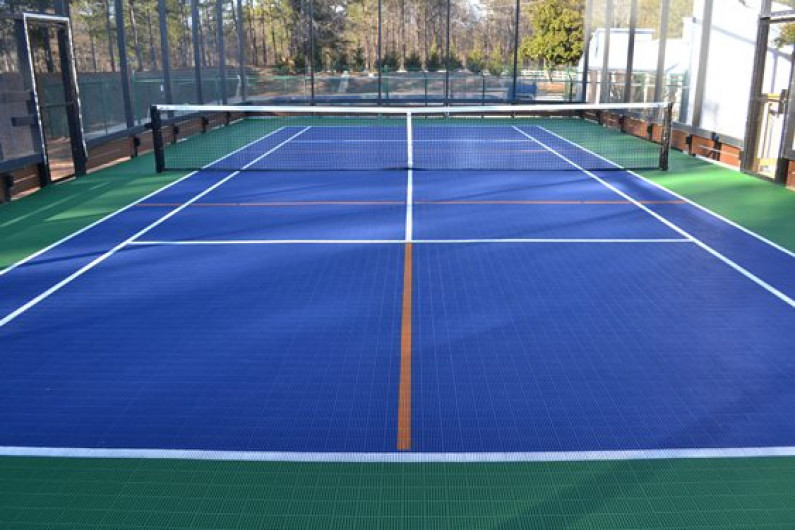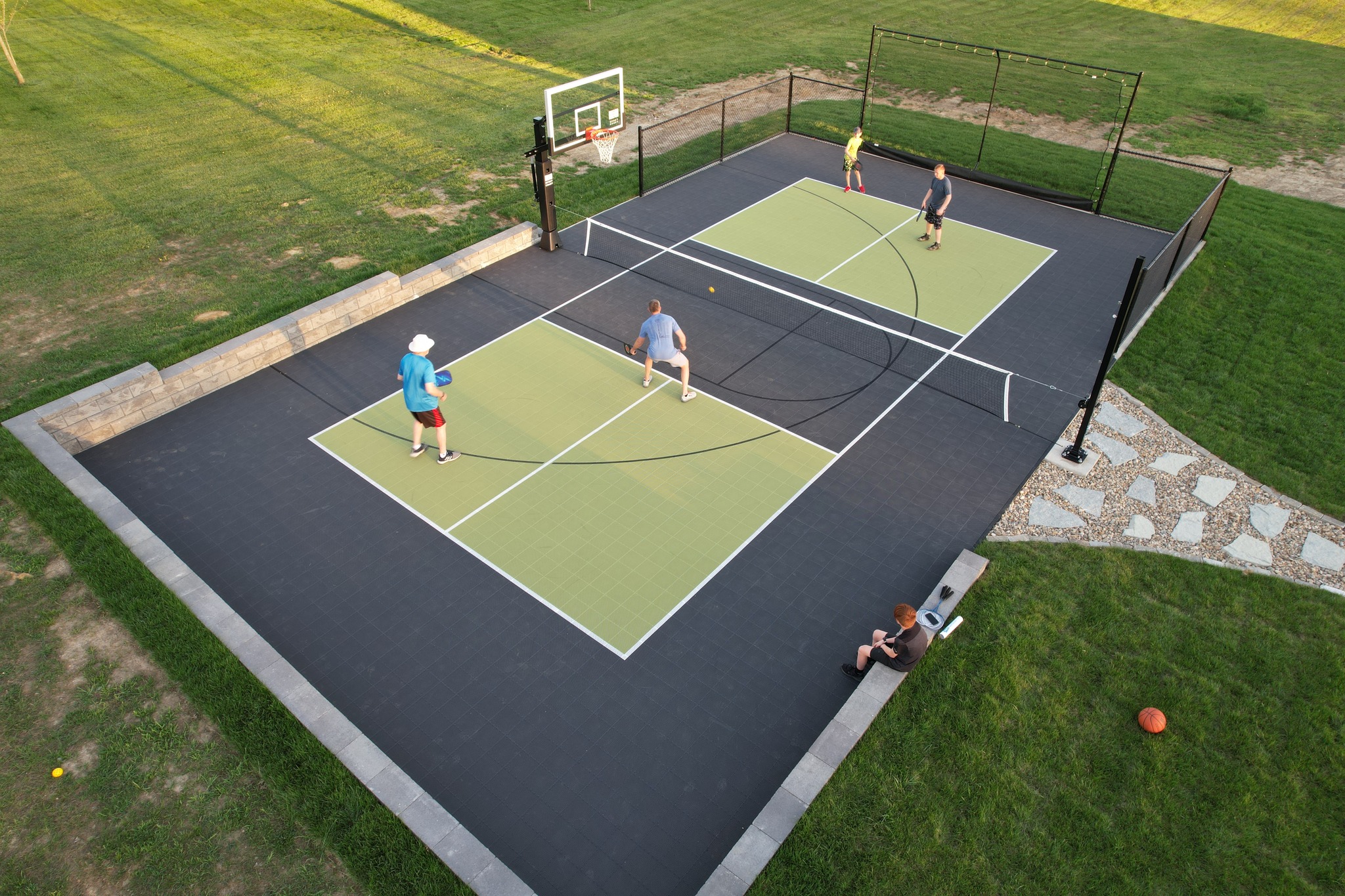Boost Citizen Interaction With Community-Driven Pickleball Court Projects
The appearance of community-driven pickleball court tasks provides a distinct possibility to promote neighborhood interaction and reinforce area connections. The genuine question remains: just how can these grassroots initiatives be tactically applied to make certain sustainability and inclusivity in diverse communities?
Relevance of Neighborhood Interaction
Community interaction is a vital component in the successful advancement of pickleball court tasks, as it cultivates a sense of ownership and collective responsibility among homeowners. When neighborhood members are proactively entailed in the planning and execution stages, they are more probable to support for the job's long-term success. Involving stakeholders such as local players, family members, and leisure groups guarantees that the centers satisfy the varied requirements and choices of the community.
Furthermore, neighborhood involvement grows a supportive environment where locals feel equipped to contribute their resources and ideas. Pickleball court construction. This collective strategy can bring about ingenious options that enhance the style and performance of the courts, making them a lot more enticing to a bigger audience. In addition, involving locals in decision-making procedures can strengthen social ties, promoting inclusivity and unity within the neighborhood
The presence of neighborhood assistance for a pickleball job can likewise play an essential function in securing financing and approval from neighborhood authorities. By showing a common dedication to recreational development, communities can successfully promote for sources and policy modifications that favor the establishment of pickleball courts, inevitably improving the local culture and recreational landscape.
Steps to Launch a Project
Starting a pickleball court job needs a systematic technique that develops on the foundation of area interaction developed in previous conversations. The initial step is to assemble a job board comprising local stakeholders, lovers, and agents from pertinent organizations. This varied team ensures that numerous perspectives are taken into consideration.
Next, perform a requirements evaluation within the neighborhood. Studies, focus teams, and public conferences can be effective in determining passion and event input on potential court areas, preferred services, and scheduling choices. Following this, establish a task strategy outlining duties, goals, and timelines.
When the strategy remains in location, involve with local authorities to recognize zoning laws and any type of required authorizations. Connecting transparently with the area throughout this procedure is crucial, as it fosters count on and encourages further participation.
In addition, arranging neighborhood occasions can help keep energy and enthusiasm. These occasions can function as systems for additional discussion and help to reinforce area ties. Document every action taken and preserve detailed documents, as this will be beneficial for future stages of the job, including financing and resource acquisition.
Funding and Resources Available
Securing financing and resources for a pickleball court project is often a critical action that can establish the job's feasibility and success. Numerous opportunities exist for getting economic assistance, varying from public financing to personal sponsorships. City government grants, frequently targeted at promoting area health and entertainment, can provide considerable sponsorship for such campaigns.
Along with federal government sources, not-for-profit organizations and structures frequently use grants especially for sports and neighborhood development jobs. Engaging neighborhood organizations as enrollers can likewise be a productive approach; numerous firms are eager to purchase area initiatives that boost their company social responsibility account.
Crowdfunding platforms have become a viable site link alternative for grassroots fundraising, allowing area participants to add straight to the project. This strategy not only raises funds however likewise promotes a sense of ownership among individuals.
Layout and Preparation Factors To Consider
Reliable layout and preparation are fundamental components of any successful pickleball court project following the acquisition of funding and resources. A thorough assessment of the proposed area is essential; this includes analyzing accessibility, proximity to existing area services, and the possibility for visibility and interaction.
The layout of the court must comply with main dimension specs while thinking about the bordering atmosphere. Incorporating attributes such as seats, shade structures, and appropriate lights can dramatically improve player experience and viewer pleasure. Materials chosen for the court surface need to prioritize sturdiness and safety, with options like acrylic or asphalt offering optimum efficiency.
Entailing area participants in the layout process promotes a feeling of ownership and guarantees that the facility satisfies local needs - Pickleball court construction. This can be attained with public consultations and studies, permitting stakeholders to express their choices and issues
Sustainability must likewise be a top priority; incorporating environmentally friendly materials and methods can add to long-lasting viability. Creating an upkeep plan to guarantee the court continues to be in excellent problem will certainly support recurring community engagement and involvement in pickleball tasks.

Success Stories and Situation Studies
Highlighting the transformative influence of community-driven efforts, several success tales illustrate exactly how collaborative initiatives have caused the advancement of vivid pickleball courts throughout different areas. One significant example is the effort in a village in Florida, where citizens affiliated to see page convert an underutilized tennis court right into a devoted pickleball center. Via fundraising occasions and partnerships with neighborhood services, the community raised enough funds to mount new webs, resurfacing, and lines, eventually cultivating a lively center for local gamers.
Similarly, in a country location of California, a grassroots motion arised to produce pickleball courts in a neighborhood park. The project not just engaged volunteers for building yet likewise consisted of workshops to engage neighborhood participants in the sporting activity. Consequently, the courts came to be a focal point for social communication and health and fitness, attracting players of any ages.
These instance researches exhibit how community-driven tasks can boost regional interaction, promote exercise, and reinforce social bonds. By leveraging collective sources and excitement, communities can efficiently sustain and produce pickleball facilities that offer varied populations and foster a sense of belonging.

Verdict
To conclude, community-driven pickleball court tasks offer as important instruments for enhancing regional interaction and cultivating a feeling of belonging amongst citizens. By focusing on stakeholder involvement throughout the planning and application phases, these initiatives can efficiently resolve diverse neighborhood requirements. In addition, leveraging readily available resources and checking out successful situation studies can provide important insights for future jobs. Ultimately, such efforts contribute to the makeover additional hints of public spaces into vibrant facilities of physical fitness and social communication, enhancing neighborhood connections.
The appearance of community-driven pickleball court projects presents a special chance to cultivate neighborhood involvement and strengthen neighborhood ties.Neighborhood interaction is a crucial element in the successful development of pickleball court jobs, as it promotes a sense of ownership and collective responsibility among locals. When community participants are proactively entailed in the preparation and application stages, they are much more most likely to promote for the job's long-lasting success.Starting a pickleball court project calls for a methodical strategy that constructs on the structure of neighborhood engagement developed in previous conversations. The job not only involved volunteers for construction but additionally consisted of workshops to engage community participants in the sporting activity.